LAB REPORT
Science and Technology Making Headlines
April 9, 2021

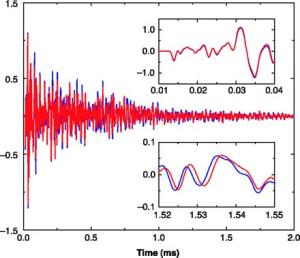
Coda wave interferometry that is usually used for seismic events also can be tested on explosions.
Cracking explosions wide open
Comparison of coda waves, the scattered waves that arrive after the direct waves of a seismic event, can be used to determine the relative locations of two underground explosions, according to a new study.
The technique, called coda wave interferometry, was tested on explosions conducted as part of the Source Physics Experiment (SPE). Lawrence Livermore National Laboratory researchers Sean Ford and Bill Walter report that coda wave interferometry also can put a limit on the extent of damage caused by an explosion.
The findings suggest the technique could be used to improve the estimates of the relative locations of larger explosions, such as the series of announced nuclear tests conducted by the Democratic People's Republic of Korea over the past two decades.
“Based on the size and frequency scaling that we were able to employ in the paper and successes at SPE,” Ford said, ”a conclusion point is that this technique could be used for larger explosions at larger separations recorded at more distant stations,” such as those used to monitor North Korean testing.

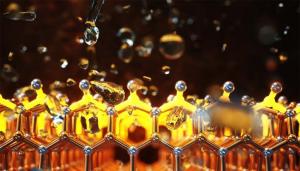
Hydrogen gas bubbles evolve from water at a thin layer of gallium oxynitride formed on gallium nitride surfaces. This work demonstrates the chemical transformation of gallium nitride into gallium oxynitride leads to sustained operation and enhanced catalytic activity, thus showing promise for oxynitride layers as protective catalytic coatings for hydrogen evolution. Illustration by Ella Maru Studios.
Just add light and water
Three years ago, scientists at the University of Michigan discovered an artificial photosynthesis device made of silicon and gallium nitride (Si/GaN) that harnesses sunlight into carbon-free hydrogen for fuel cells with twice the efficiency and stability of some previous technologies.
Now, scientists at Lawrence Livermore and Lawrence Berkeley national laboratories – in collaboration with the University of Michigan – have uncovered a surprising, self-improving property in Si/GaN that contributes to the material’s highly efficient and stable performance in converting light and water into carbon-free hydrogen. The research could help radically accelerate the commercialization of artificial photosynthesis technologies and hydrogen fuel cells.
Materials in solar fuels systems usually degrade, become less stable and as a result produce hydrogen less efficiently, but the team found an unusual property in Si/GaN that somehow enables it to become more efficient and stable.
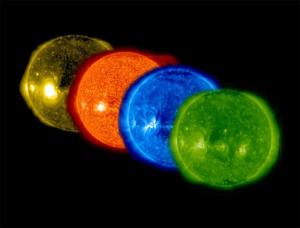
This 2010 photo shows mirrors used in NASA’s Extreme Ultraviolet Imaging Telescope that imaged the solar atmosphere at several wavelengths. A Lab team used technology developed by the EUVL project to design and fabricate the reflective multilayer coatings. Credit: NASA.
The brains behind the machine
The silicon brains running some of the world’s newest mobile phones and personal computers were made possible in part by advanced laser and plasma physics research at Lawrence Livermore National Laboratory (LLNL).
Last year, Apple’s iPhone 12s became the first mobile phones on the market powered by 5-nanometer (nm) microprocessors, which are manufactured using a transistor-packing extreme ultraviolet (EUV) lithography process that can be traced to work done by LLNL, Sandia National Laboratories and Lawrence Berkeley National Laboratory dating back to the 1990s.
The process, which uses EUV light to etch features that are as small as a few nanometers into chips and processors, is igniting a revolution sweeping through the semiconductor industry. Samsung last month unveiled a version of its flagship Galaxy S21 smartphone that will run on the company’s own EUV 5-nm chip, the Exynos 2100, although for now that version will be available only outside the North American and South Korean markets.
The production of smaller, more powerful and more efficient chips also should help the Lab in the near future.
“It’s great that we can buy a mobile phone that has a little bit of Livermore history encapsulated inside,” said physicist Craig Siders, LLNL commercial technology development leader for the National Ignition Facility & Photon Science Directorate. “But the big payoff will be in a few years when we’ll be able to do our central Lab mission with computers that just absolutely could not have existed without this sort of technology.”
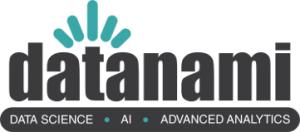
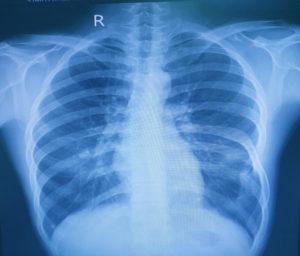
LLNL researchers are using deep learning models to diagnose diseases from X-ray images.
Taking a deep look at diagnosing disease
Improving disease diagnosis is one of the most popular applications for deep learning researchers — and now, they’re looking to streamline the process. New research from Lawrence Livermore National Laboratory (LLNL) uses new “self-training” deep learning models to diagnose diseases from X-ray imaging.
Data acquisition and labeling are big pain points for AI applications in diagnosis: health data is hard to acquire, costly when available and difficult to label. This, in turn, impedes the AI models’ ability to diagnose, as they lack the data necessary to make inferences.
“Building predictive models rapidly is becoming more important in health care,” said Jay Thiagarajan, a computer scientist at LLNL. “There is a fundamental problem we’re trying to address. Data comes from different hospitals and it’s difficult to label — experts don’t have the time to collect and annotate it all. It’s often posed as a multi-label classification problem, where we are looking at the presence of multiple diseases in one shot. We can’t wait to have enough data for every combination of disease conditions, so we built a new technique that tries to compensate for this lack of data using regularization strategies that can make deep learning models much more efficient, even with limited data.”

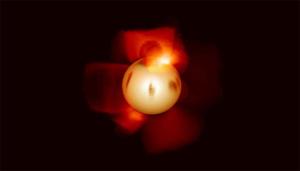
Astronomers used a computer and data about the star AB Doradus to make this picture. This is what the star might look like. Image courtesy A. Cameron, M. Jardine and K. Wood/University of St Andrews.
Pandora to open the box of alien worlds
Despite decades of space exploration, we still don’t know if there are alien civilizations out there. But at least now we know that there are enough planets and stars in the galaxy that could sustain them.
According to NASA, more than 4,000 exoplanets were discovered orbiting distant suns so far, and the number is likely to increase as more and more observation hardware is thrown into the fight. A number of 20 such planets will soon become the focus of a mission called Pandora, meant to determine the composition of their respective atmospheres better.
Pandora is one of three projects NASA gave the green light to as part of its low-cost astrophysics program called Pioneers. It is a SmallSat satellite, weighing less than 397 pounds and the size of a large kitchen refrigertator. Lawrence Livermore National Laboratory and Goddard Space Flight Center serve as lead institutions for the Pandora scientific mission.
A launch date for the mission and the target planets have not yet been announced.





